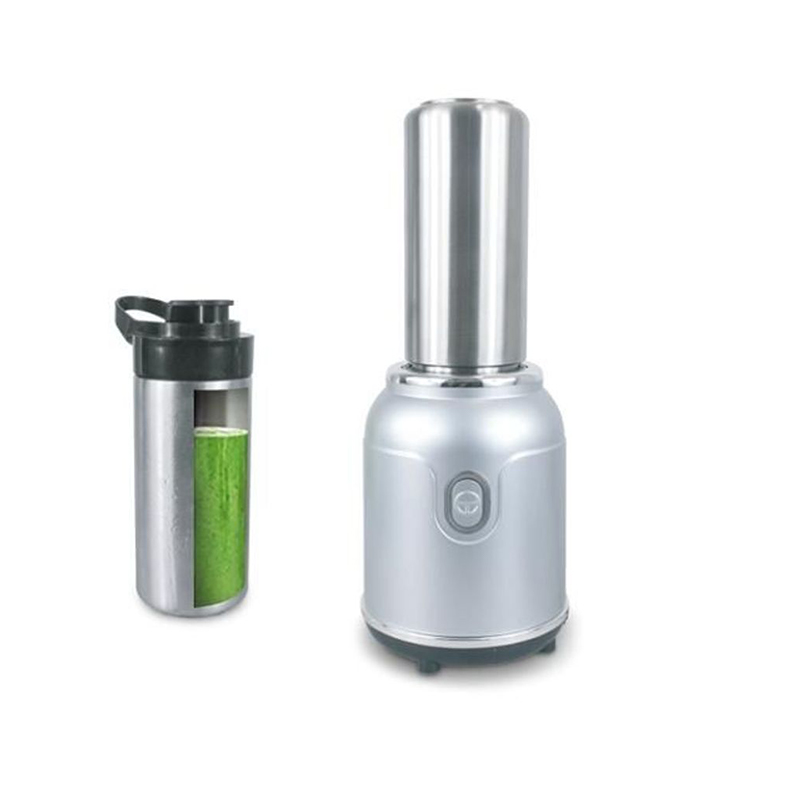To solve common table blender problems like consistency issues or motor overheating, follow these troubleshooting steps:
Consistency Issues:
1.Blending Speed and Duration: Understanding the intricacies of blending speed and duration is crucial for achieving the desired consistency in your blends. Different ingredients require varying levels of blending intensity. For instance, delicate fruits may need gentle blending at low speeds to avoid overprocessing, while tougher ingredients like nuts or seeds may require higher speeds and longer blending times to achieve a smooth texture. Refer to the blender's manual or consult reputable culinary resources for guidance on optimal blending settings for specific ingredients and recipes.
2.Avoid Overfilling: Overfilling the blender jar not only compromises blending efficiency but also risks damaging the appliance. When the jar is overcrowded, ingredients may become compacted, impeding the circulation of blades and hindering proper blending. Additionally, excessive pressure from overcrowding can strain the motor and drive mechanism, leading to premature wear and tear. Always adhere to the manufacturer's recommended maximum capacity to ensure adequate space for ingredients to circulate freely and promote consistent blending results.
3.Utilize Pulse Function: The pulse function is a versatile tool for achieving precise control over the blending process. It allows users to apply short bursts of power at variable intervals, which can be particularly effective for breaking down stubborn ingredients or achieving a desired texture without overprocessing. When using the pulse function, experiment with different pulse durations and frequencies to tailor the blending process to your specific ingredients and preferences. For example, pulsing intermittently can help evenly distribute ingredients and prevent overblending, resulting in a more uniform and desirable consistency.
Motor Overheating:
1.Avoid Overloading: Overloading the blender places excessive strain on the motor and can lead to overheating, reduced performance, and potential damage to the appliance. Each blender model has a specified maximum capacity, which should not be exceeded to ensure safe and efficient operation. When preparing blends, carefully measure ingredients and avoid exceeding the recommended maximum capacity to prevent motor stress and overheating. Additionally, consider blending ingredients in smaller batches if necessary to avoid overloading the blender and optimize blending performance.
2.Cooling Periods: If the blender's motor overheats during use, it is essential to take immediate action to prevent damage and ensure user safety. When overheating occurs, promptly switch off the blender and unplug it from the power source to halt operation and initiate the cooling process. Allow the appliance to sit idle for several minutes to dissipate heat and reduce internal temperatures before attempting to resume blending. Continuous operation with an overheated motor can exacerbate heat buildup and increase the risk of motor damage or failure. By allowing the blender to cool down adequately between uses, you can help prolong its lifespan and maintain optimal performance.
3.Optimal Ventilation: Proper ventilation is essential for dissipating heat generated during blender operation and preventing motor overheating. Ensure that the blender is positioned in a well-ventilated area with adequate airflow around the appliance during use. Avoid enclosing the blender in tight spaces or obstructing ventilation openings, as this can impede airflow and contribute to heat buildup. Additionally, keep the blender away from heat sources such as stovetops, ovens, or direct sunlight, which can further elevate internal temperatures and increase the risk of overheating. By maintaining optimal ventilation around the blender, you can help promote efficient heat dissipation and reduce the likelihood of motor overheating.
Rentro Blender

Rentro Blender



 English
English 中文简体
中文简体 English
English 中文简体
中文简体












